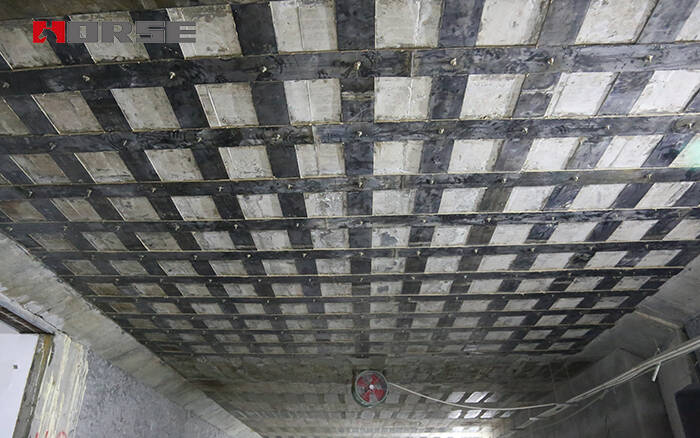Civil Engineer Technical Interview Question | Top 5
What is role of site engineering in construction ?
Site engineering plays a crucial role in construction by overseeing the planning, design, and execution of projects.
- Site engineers are responsible for surveying the construction site and preparing detailed plans and layouts.
- They collaborate with architects and contractors to ensure that the project meets all specifications and regulations.
- Site engineers supervise the construction process, monitor progress, and resolve any issues that may arise.
- They ensure that the project is completed on time, within budget, and in compliance with safety standards.
- Site engineers also manage the procurement of materials and equipment needed for construction.
- They conduct quality control inspections to ensure the work meets the required standards.
- Site engineers play a key role in coordinating with various stakeholders, including clients, subcontractors, and government agencies.
- They are responsible for maintaining accurate records and documentation throughout the construction process.
- Site engineers may also be involved in post-construction activities, such as site restoration and final inspections.
How do we strengthen an existing foundation of an old building ?
Generally, strengthening of the foundations might be needed due to the alterations in serviceability of the buildings. One method of strengthening can be carried out by constructing a concrete jacket to the existing footings. Strengthening foundations by installing jackets can be achieved either without increase in bearing area at the base or increasing it, whenever the soil has inadequate bearing capacity. Below mentioned procedure is for soil with adequate bearing capacity.
Steps to be followed:
Step1 – Excavate the surcharge soil around the footing.
Step2 – Roughen the top surface of the base slab for proper bond between the poured concrete and existing one.
Step3 – Drilling holes in the existing concrete of footing to install dowels.
Step4 – Fastening the new steel bars with the dowels using steel wires. The diameter and number of steel bars should be according to the design.
Step5 – Coating the external footing surface for proper bond between new concrete and old concrete.
Step6 – Completing the Jacketing of the footing by pouring new concrete in the steel cage.
Note: The new jacket should be properly anchored to the existing footing and column neck in order to guarantee proper transfer of loads.
Other methods which can be carried out for strengthening:
1. Strengthening by Underpinning and Enlarging the base of the foundations – By underpinning with additional structural elements below the existing foundations in form of solid concrete slabs.
2. Strengthening of the Foundations by Converting the Type of Them – That is converting a set of isolated footings to strip footings.
3. Strengthening of the Foundations by Piles
HOW TO IMPROVE BEARING CAPACITY OF SOIL?
TECHNIQUES USED FOR IMPROVING BEARING CAPACITY OF SOIL
The following techniques can be used for improving bearing capacity of soil as per the site condition.
- Increasing depth of foundation
- Draining the soil
- Compacting the soil
- Confining the soil
- Replacing the poor soil
- Using grouting material
- Stabilizing the soil with chemicals
1. INCREASING DEPTH OF FOUNDATION
At deeper depths, the over burden pressure on soil is higher; hence the soil is more compacted at deeper depth. As a result it shows higher bearing capacity. This is applicable only for cohesionless soils such as sandy and gravelly soils. This method of improving bearing capacity of soil is not applicable if the subsoil material grows wetter as depth increase. This method has a limited use because with increase in depth, the weight and cost of foundation also increases.
2. DRAINING THE SOIL
With increase in percentage of water content in soil, the bearing capacity decreases. In case of sandy soil, the bearing capacity may reduce as much as 50% due to presence of water content. Cohesionless soils (i.e. sandy & gravelly soils) can be drained by laying the porous pipes to a gentle slope, over a bed of sand and filling the trenches above the pipes with loose boulders. These trenches subsequently should lead to the nearest well or any water body.
3. COMPACTING THE SOIL
If we compact soil using appropriate method, then there will be increase in its density and shear strength. As a result the bearing capacity of soil also increases. There are many methods of compacting soils on site. Few of them are mentioned below.
- By spreading broken stones, gravel or sand and thereafter ramming well in the bed of trenches.
- Using an appropriate roller as per the soil type to move at a specified speed.
- Br driving concrete piles or wood piles and withdrawing piles and subsequently filling the holes with sand or concrete.
4. CONFINING THE SOIL
In this method, the soils are enclosed with the help of sheet piles. This confined soil is further compacted to get more strength. This method is applicable for shallow foundations.
5. REPLACING THE POOR SOIL
In this method the poor soil is first removed and then the gap is filled up by superior material such as sand, stone, gravel or any other hard material. In order to do this, first excavate a foundation trench of about 1.5 m deep, and then fill the hard material is stages of 30 cm. Then compact the hard material at every stage. This method is useful for foundations in black cotton soils.
6. USING GROUTING MATERIAL
This method is applicable for soils where there is presence of pores, fissures or cracks etc underneath the foundation. In this method, poor soil bearing strata is hardened by injecting the cement grout under pressure, because it scales off any cracks or pores or fissures etc. For proper distribution of the cement grout, the ground is bored and perforated pipes are introduced to force the grout.
7. STABILIZING THE SOIL WITH CHEMICALS
This method of improving bearing capacity of soil is costly and applied in exceptional cases. In this method, chemical solutions, like silicates of soda and calcium chloride is injected with pressure into the soil. These chemical along with the soil particles form a gel like structure and develop a compact mass.This is called chemical stabilization of soil and used to give additional strength to soft soils at deeper depths.
How To Strengthen The Floor Slab With Insufficient Load-bearing?
Floor reinforcement must first understand the principle of floor slab load-bearing. According to the different functions of the floor slab, the required load-bearing value is different, and then the corresponding reinforcement method can be used to strengthen the floor slab.
The general floor bearing value is: 2.0-3.5 (kN/m2)
1. Residences, dormitories, hotels, office buildings, hospital wards, nurseries, kindergartens
2.0(kN/m2);
2. Classrooms, laboratory rooms, reading rooms, conference rooms, hospital outpatient rooms, canteens, restaurants, general information archives 2.5 (kN/m2);
3. Auditorium, theater, cinema, stand with fixed seats, public laundry room 3.0 (kN/m2).
Load-bearing value of floor slab for special purpose
1. Shops, exhibition halls, stations, ports, airport halls and their passenger waiting rooms, stands without fixed seats
3.5(kN/m2);
2. Gym, performance stage, ballroom
4.0(kN/m2);
3. Book stacks, archives, storage rooms
5.0(kN/m2);
4. Dense cabinet book stack
12.0(kN/m2);
5. Ventilation machine room, elevator machine room
7.0 (kN/m2).
Two main reinforcement methods are used for floor reinforcement: stick steel reinforcement and stick carbon fiber reinforcement. These two reinforcement methods have their own advantages and disadvantages in actual reinforcement engineering applications, as follows:

Bonded steel plate reinforcement
The steel frame and the floor slab are riveted into a whole, and the steel frame is bridged on the beams, and the weight acting on the floor slab is directly transmitted to the beams through the steel frame, thereby improving the load-bearing method of the floor slab.
Carbon fiber reinforcement
The carbon fiber cloth is evenly pasted on the bottom of the floor slab and bonded to the floor and the beam as a whole, and the weight on the floor is transferred to the beam through the stretching of the carbon fiber, so as to improve the load bearing of the floor.
The advantages and disadvantages of the two slab reinforcement methods are very obvious. Steel reinforcement is cheap, easy to construct, and does not require additional construction. The disadvantage is that it has limited load-bearing capacity and sacrifices the height of the factory building. The advantages and disadvantages of carbon fiber reinforcement are just the opposite of steel reinforcement, which has a good effect on improving the load-bearing capacity and requires less maintenance.
The above two kinds of floor load-bearing reinforcement methods can effectively improve the load-bearing capacity of the floor slab. However, the specific reinforcement method to be selected needs to be selected according to different functions, different values of floor live load, on-site construction environment, project characteristics and other factors to select a targeted design reinforcement plan.

